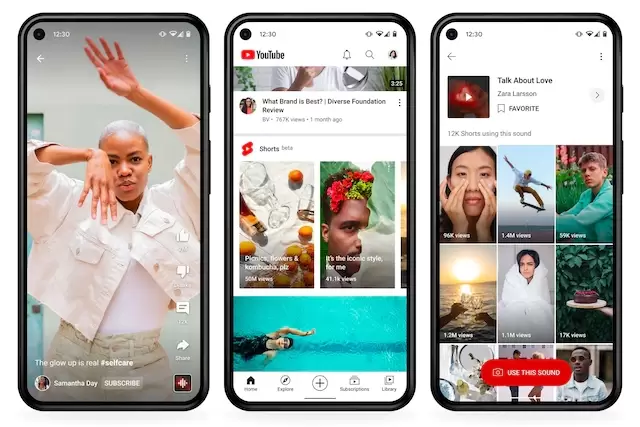Teaching History with YouTube
This means that it is possible to stop a lecture for just a brief period of time, show the clip and either discuss with students what they just saw or explain its significance yourself without losing much time from your presentation. Most educational documentaries, while often worthy and impressive efforts, simply aren't made to fit the parameters of a single class period. Many teachers, myself included, tend to schedule period-long films on the days that they can't be in class for some reason. This collection, which is actually owned by the Library of Congress but available at a different URL, includes 60,000 films described by the curators of the site as ephemera: advertising, educational video, government shorts, and so on. I have been using the site for about a year now and already some of the clips I have used in class are no longer available. It's the web site on which a fictional character named "Lonelygirl15" became an internet sensation and where hundreds of thousands of people went to watch a guy scream, "Leave Britney alone!" while crying under a blanket. This content w as c re at ed by GSA C ontent Ge nera tor DEMO!
 Of course, the main problem with using the Web for anything is that the information you use today may not be available to you tomorrow or next month or especially 10 years from now. Consulting with a colleague of mine, I quickly found a series of other clips that would be of use in world history classes: Einstein explaining the theory of relativity (in English), a newsreel announcing Mussolini's execution (which includes footage of the firing squad doing its work), a 1917 speech by Lenin, and a collection of file footage depicting Mao Zedong at various stages of his career. Since primary-source clips are usually self-contained, I don't have to waste time explaining the context from which they came. Even if they disappear (as did the first version of the Lucy and Ethel clip I put in my favorites file), there are often multiple versions of popular clips you can use (as there was with Lucy and Ethel). Brief primary-source film clips can benefit learners of all kinds through their explanatory power without taking too much time from other kinds of instruction. 1926. As the earliest silent film clips tend to be only two or three minutes anyway, they are perfect for not taking too much time from a lecture.
Of course, the main problem with using the Web for anything is that the information you use today may not be available to you tomorrow or next month or especially 10 years from now. Consulting with a colleague of mine, I quickly found a series of other clips that would be of use in world history classes: Einstein explaining the theory of relativity (in English), a newsreel announcing Mussolini's execution (which includes footage of the firing squad doing its work), a 1917 speech by Lenin, and a collection of file footage depicting Mao Zedong at various stages of his career. Since primary-source clips are usually self-contained, I don't have to waste time explaining the context from which they came. Even if they disappear (as did the first version of the Lucy and Ethel clip I put in my favorites file), there are often multiple versions of popular clips you can use (as there was with Lucy and Ethel). Brief primary-source film clips can benefit learners of all kinds through their explanatory power without taking too much time from other kinds of instruction. 1926. As the earliest silent film clips tend to be only two or three minutes anyway, they are perfect for not taking too much time from a lecture.
Other than the kind of movies, what distinguishes these sites from YouTube is the ability to download clips onto your computer. Thanks to YouTube, I have been able to show film clips to my students that I had talked about in class for years, but never had the ability screen before. However, many primary-source historical film clips are available for nothing to anyone with a Web browser. However, YouTube also contains a treasure trove of primary-source historical video for those teaching the history of anywhere in the world from the invention of motion pictures about 110 years ago up to the present. Universal Newsreels, including the Mussolini video described above. YouTube is certainly not the only place to find primary-source video clips on the internet, and for some periods of history it is not even the best. In fact, YouTube's user agreement specifically puts the onus on copyright holders to prove they own the rights to a particular clip before YouTube will take it down. Since YouTube is used by people all over the world, not all sites of interest to world history teachers are translated into English, but since one can always turn the sound down and explain the significance of the images on screen as they appear, this might not matter.
Undoubtedly, the largest collection of such clips is available on YouTube. Although I have seen some films that run as long as an hour, most YouTube clips are under 10 minutes long. So while clips from a documentary taped off of TV last week might disappear by the time you want to use them next semester, most of the primary source clips on YouTube that historians would find useful are a pretty safe bet to stick around for a while. The fact that most of the content on YouTube comes as clips is perhaps the best thing about it besides the available selection. Undoubtedly, there are countless intriguing clips of historical value on YouTube and the internet at large that have yet to come to the attention of most historians, including me. So while users should be aware that removal of films from YouTube is always a possibility for a variety of reasons, I am unaware of any such lawsuits being provoked by historical footage.
If you adored this article so you would like to acquire more info relating to video shorts nicely visit our own internet site.

Post a Comment for "Teaching History with YouTube"